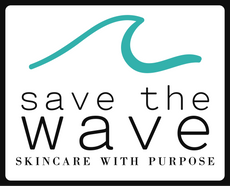aging ·
anti-aging ·
antioxidants ·
avocados ·
blog ·
cruelty free sincare ·
cruelty free skincare ·
diet ·
green ·
green living ·
groceries ·
health ·
healthy living ·
healthy skin ·
nutrition ·
organic skincare ·
plastic free ·
retinol ·
rosacea ·
save the planet ·
save the wave skincare ·
skin ·
skin cancer ·
skinspiration ·
SPF ·
sunblock ·
vegan skincare ·
vitamin d ·
vitamins ·
wrinkles ·
The Where, What & Why of Vitamin D
In clinical practice patients often ask about Vitamin D, why it’s important, and how do we get more of it. Here is some information we are often discussing with our patients. Read on.
Vitamin D is an important element for our overall health, but why? What does it do in our body? What happens if we aren’t getting enough?
Vitamin D deficiency is a very common condition in the US. Upwards of 42% of Americans are deficient in Vitamin D with a vast majority in our African American and Hispanic populations because of decreased absorption. Vitamin D deficiency has been linked to a number of chronic diseases including osteoporosis, cancer (including colon, prostate, and breast cancer), and cardiovascular disease.
In the body, Vitamin D promotes and maintains appropriate levels of calcium needed for bone growth and maintenance. Other critical roles in the body include influencing neuromuscular cell growth, immune system function, and reduction of inflammation.
It is recommended that most adults get between 600-800 IUs of Vitamin D per day; More if you are pregnant or lactating. Unfortunately, very few foods are good sources of Vitamin D. Some of the highest levels are in fatty fish such as salmon and tuna. Lesser amounts are found in beef, cheese, eggs, and—believe it or not—mushrooms. Most Americans actually get their Vitamin D through fortified foods, including most dairy products, orange juice, cereals, and supplements. We can also absorb Vitamin D from sun exposure. When we absorb UVB light our body is able to convert it into a usable form of Vitamin D with as little as 15 minutes of sun exposure for fair skinned individuals.
Very few people who are deficient in Vitamin D have symptoms, but some may experience increased illnesses, bone and/or muscle pain, fatigue, depression, and decreased wound healing. Those at risk for Vitamin D deficiency include people who take certain medicines for weight loss or cholesterol lowering, or steroids. Also at risk are people with darker skin, kidney disease, limited sun exposure, obesity, or a restricted diet.
So how do we avoid Vitamin D Deficiency without damaging our skin? Our recommendation is first see your doctor to determine if you are deficient in Vitamin D, and if so, purchase supplements with at least 2000-5000 units of Vitamin D3.
If you have any questions, please ask!
-Elena & Heather.







Leave a comment